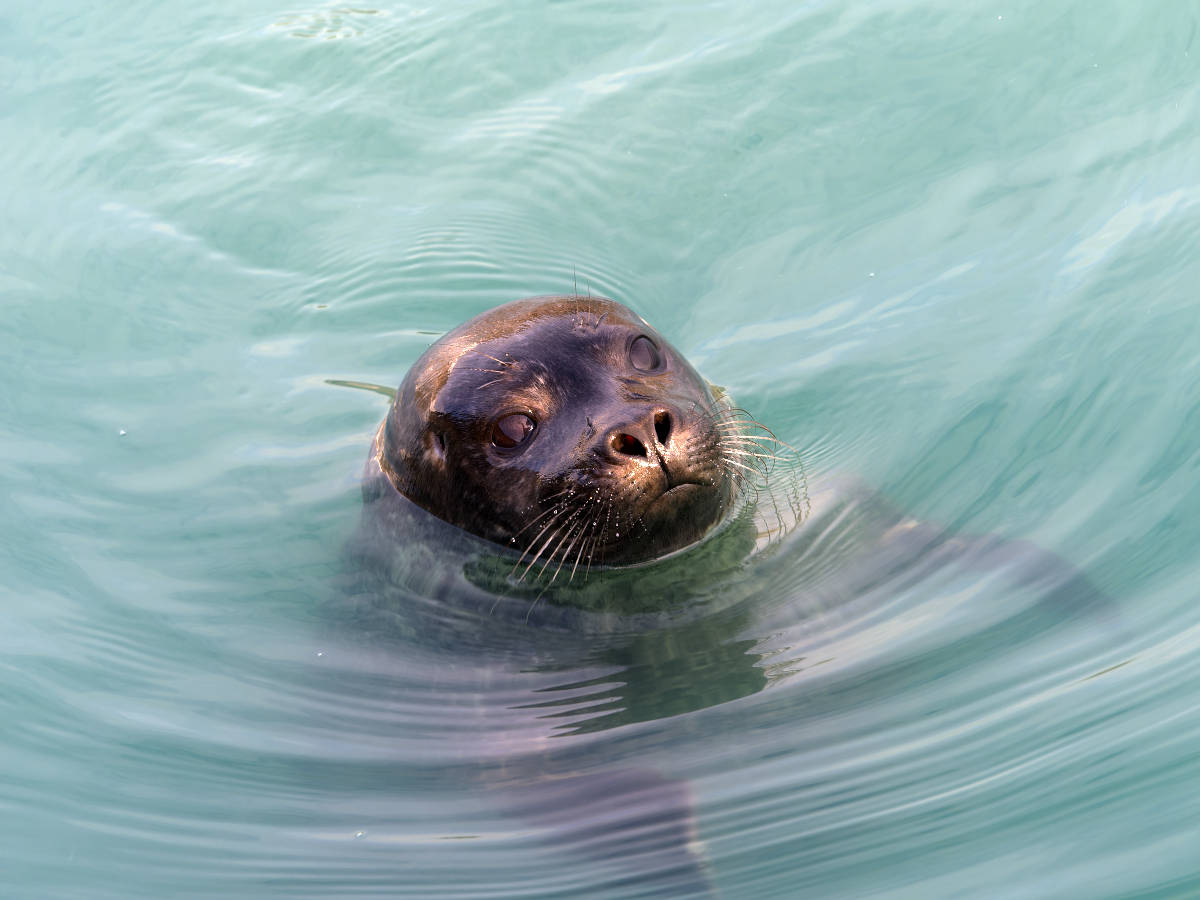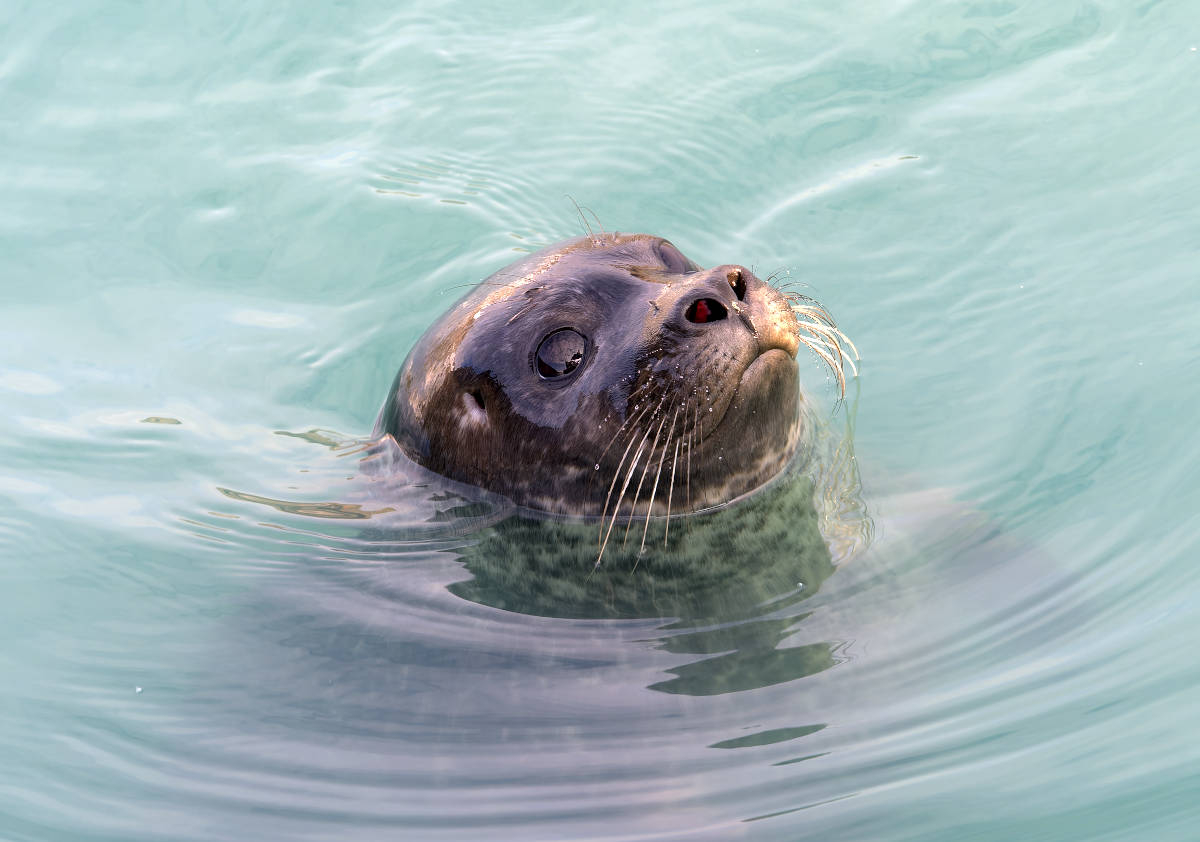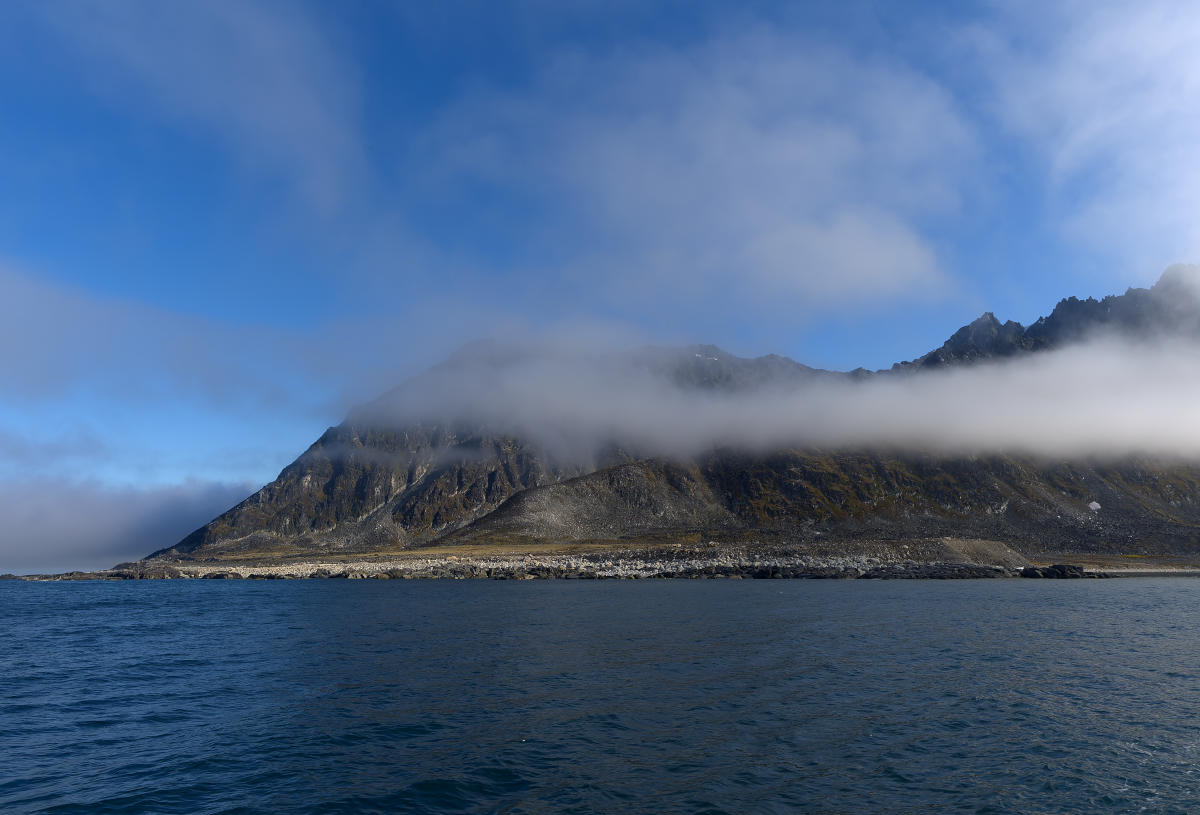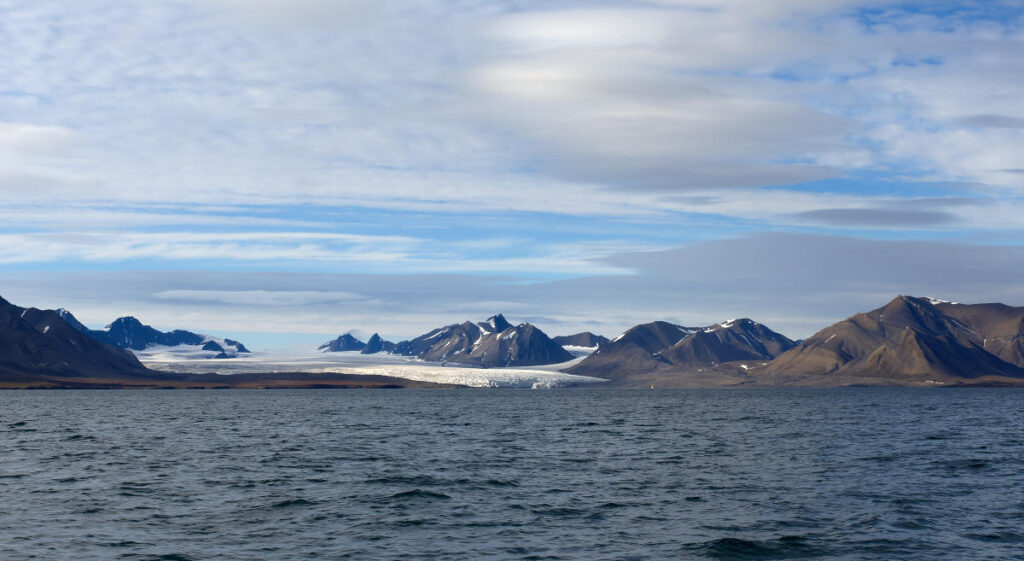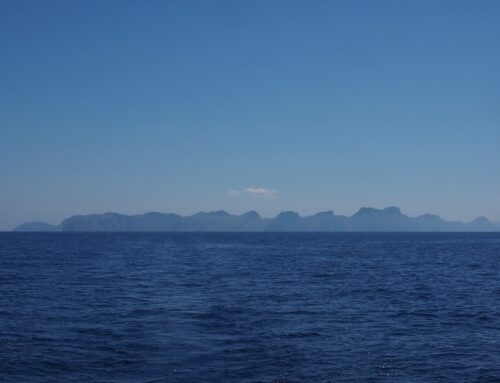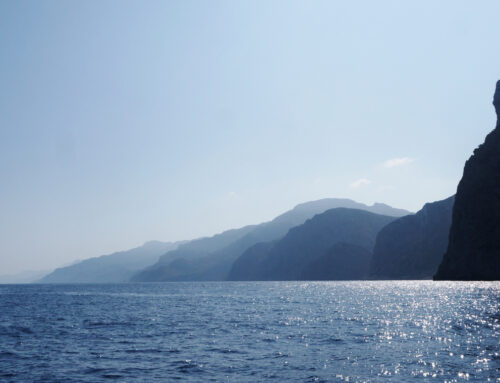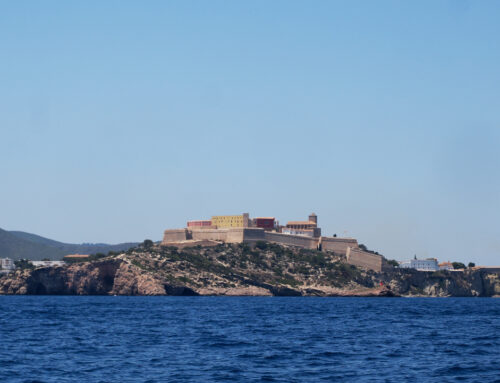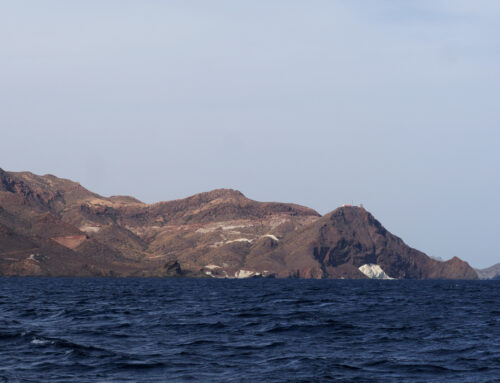Continuing south
ANOTHER WHALING SITE
Another whaling site, Hamburgbukta ended up being a delightful, keyhole bay, named after the city of Hamburg. The Germans, or their antecedents at least, weren’t major players in the Svalbard whaling activities. The city of Hamburg, however, did manage to field a whaling fleet for some years. While in Svalbard, these boats were based out of this tiny harbour.
The Bukta (Bay) is accessed through a very narrow entrance, perhaps 150m wide, with a sill about 2m deep that always has breaking waves along its sides. Inside it opens into a deep bay with mountains and glaciers on three sides while to the seaward side there is a long, rocky moraine. Quite spectacular!

Anchored in Hamburgbukta.
CURIOUS BABY SEAL
Almost as soon as our anchor was down, we were visited by a very young ringed seal, which popped up all around the boat to check us out. Meanwhile, mum kept a respectable distance.
A very curious young Ringed seal.
HISTORICAL SITES AT HAMBURGBUKTA
After dinner we took a wander on both the southern and the northern headlands, all the while followed by the seals from the waterline.
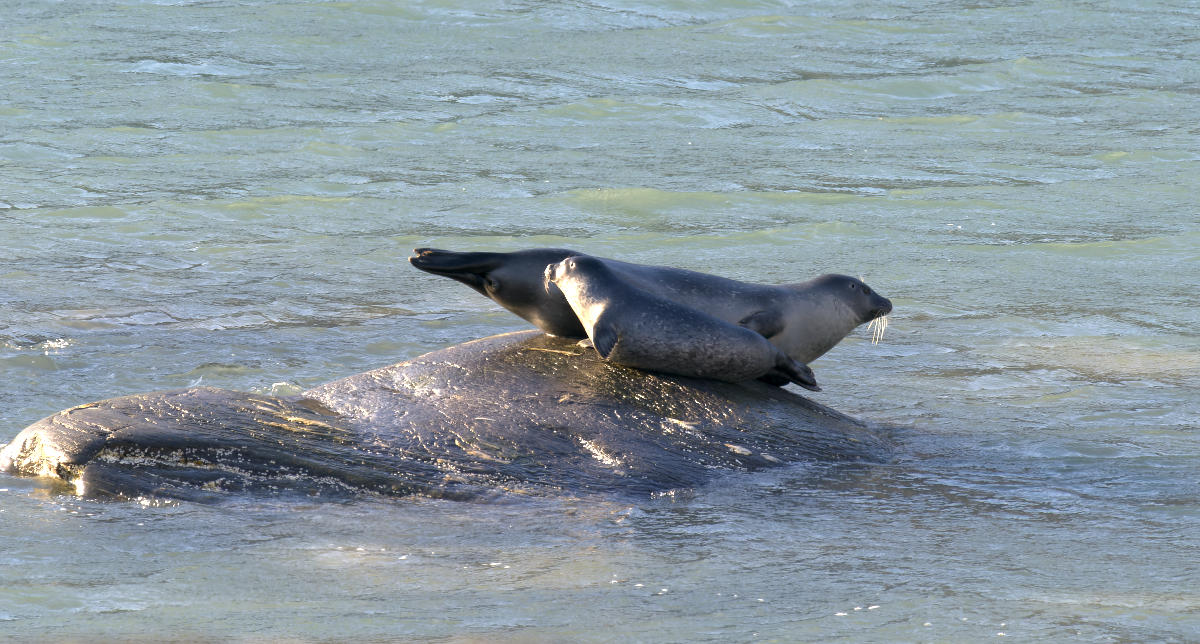
Mum and baby seal followed us around.
There isn’t much recognizable left of the Hamburgian activities, nor of the Pomors (Russian hunters) who apparently were also here subsequently. Just a few graves and a couple of cairns. Once again, what a wonderfully bleak and beautiful spot to wait for eternity.

On land, at 2100 hr, with sunnies on.
ANOTHER GALE FORECAST
The weather forecast had predicted gale force winds from the northwest overnight and, despite the warnings in the cruising guides that this anchorage had poor holding, it was our best option for waiting them out. The forecasted event did eventuate overnight but just as strong winds and not a full gale. And luckily, in contrast to the pilot books, we were very pleased to find out that the holding in the north west corner to be excellent. The whole night, we were as snug as bugs in our little corner of Hamburgbukta.
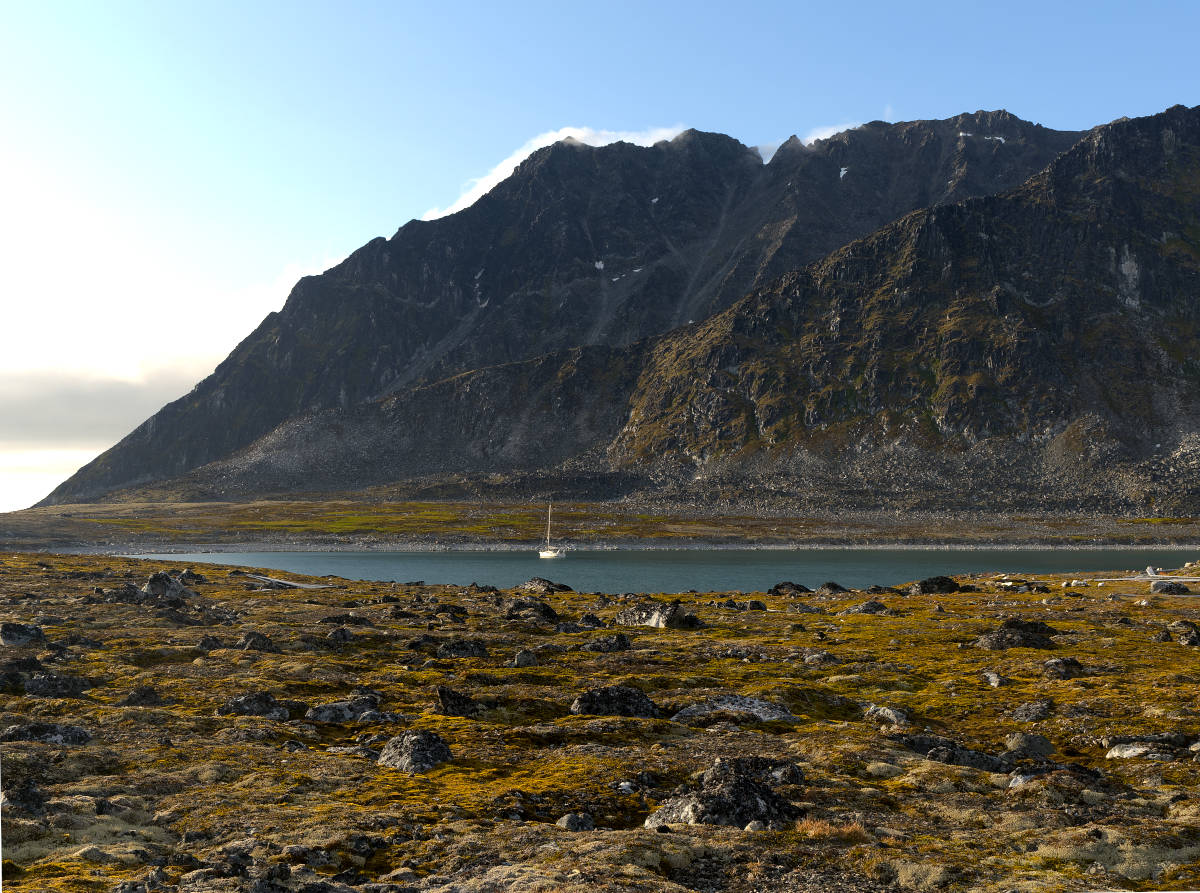
Anchored snugly in the north-west corner.
CONTINUING ON SOUTH
After a very good sleep, we pulled up our anchor and headed down the presumably bare and rocky bit of coast towards Kongsfjord and the Fjortende Julibreen, the glacier in the Krossfjord that we had missed anchoring at on our northwards journey. Unfortunately, the coastline was enveloped in thick fog, so we missed a lot of scenery on the way south just as we had done on the way north a few weeks earlier.
On the way, we saw lots and lots of seabirds on the water. Perhaps it was that time of year already when the chicks start leaving the nests and the whole family returns to the ocean once more to spend the winter at sea.
The other thing we noticed is that it became decidedly warmer! In the northwest corner of Spitsbergen, we had been in pretty constant temperatures of 5° to 6°C. Now it was a balmy 18°! Still quite cool for us tropical folks but warm enough to peel off at least one layer of winter clothing.
Sometimes the fog would lift, revealing more spectacular scenery.
MORE FOG
As luck would have it, the Fjortende Julibreen was fogged in when we arrived so we headed, once again, across to Ebeltofthamna. This time, we anchored in the bay to the north of the estuary and had a pleasant evening watching reindeer and geese. Of course, while we were eating dinner the fog on the glacier cleared…but we stayed put and watched the reindeer grazing on the tundra, and the barnacle and pink-footed geese goosing around in the shallows. We even managed to entertain a dovkie as a guest for all of about 30 seconds after it surfaced next to Yuma, apparently not having seen the boat.
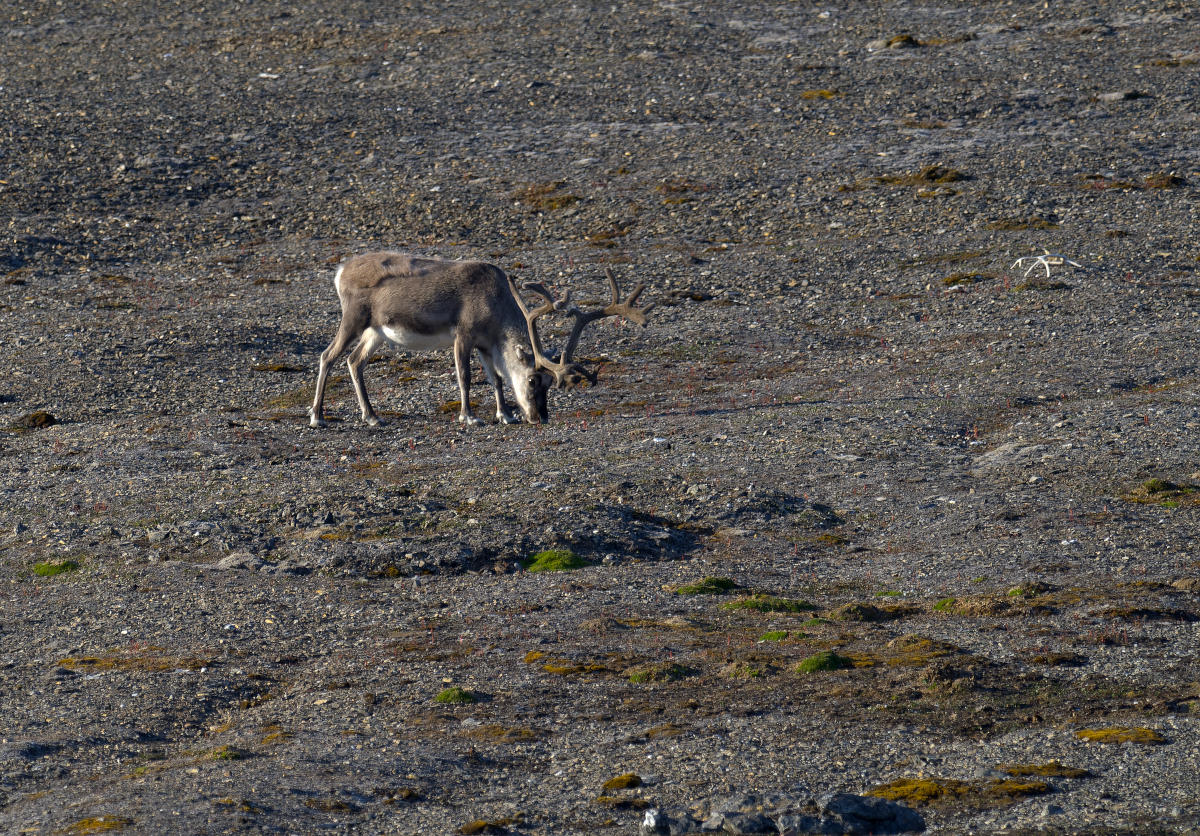
The closest we got to a Svalbard reindeer.
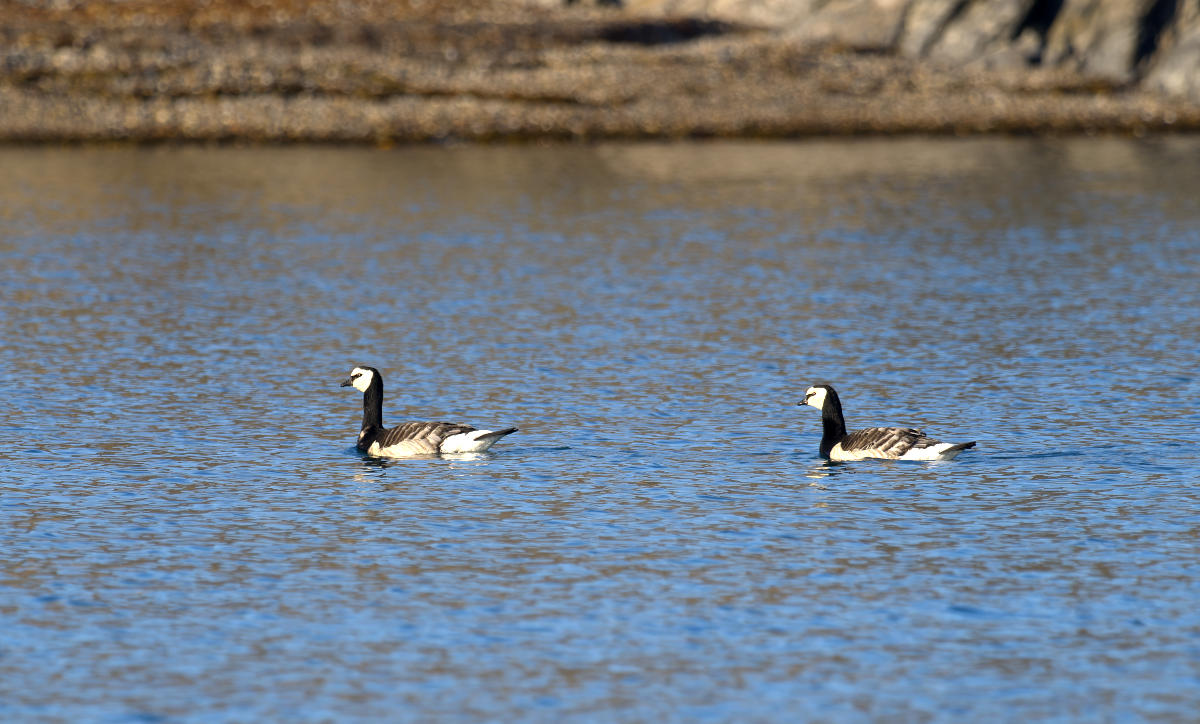
Barnacle geese.
We also tried our fishing gear, but as usual did not catch anything. By now we had heard from quite a few other sailors who also had no success catching anything in these waters. Either there are no fish in Svalbard, or the seals and birds have eaten all the fish…

